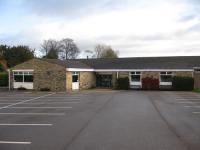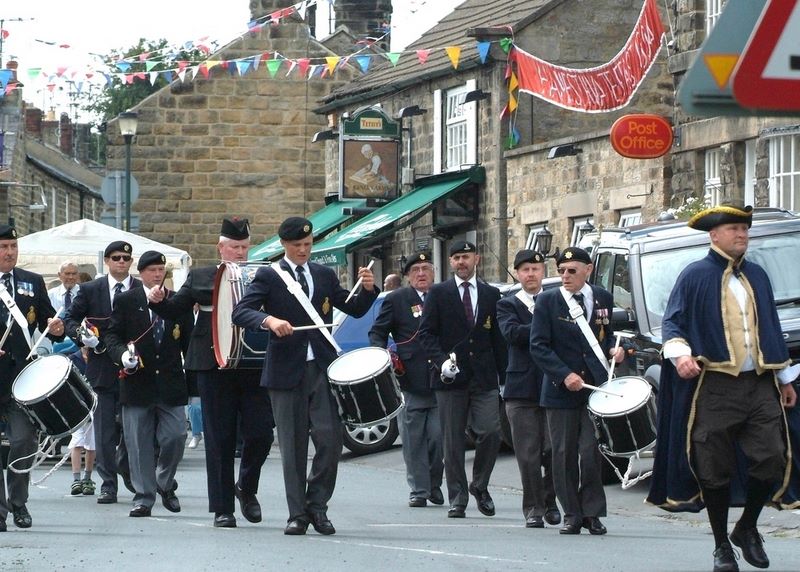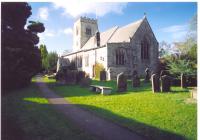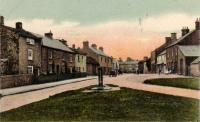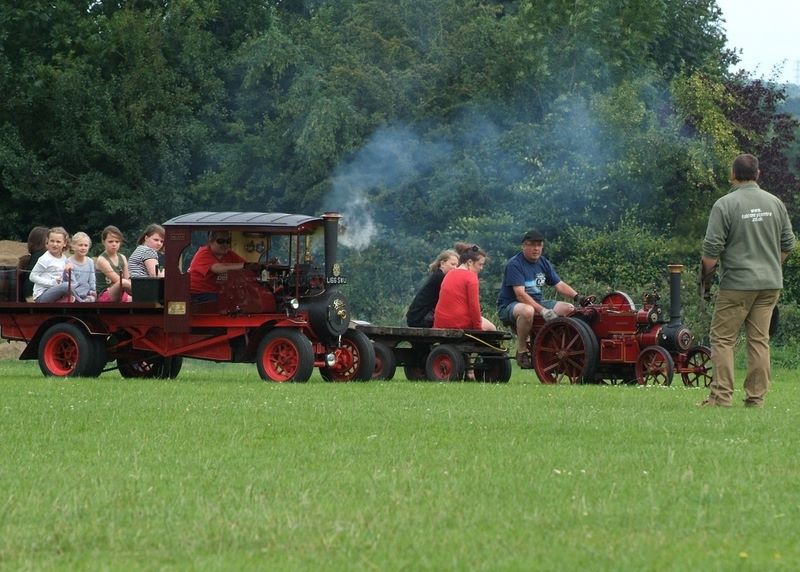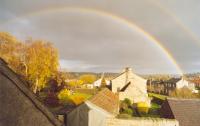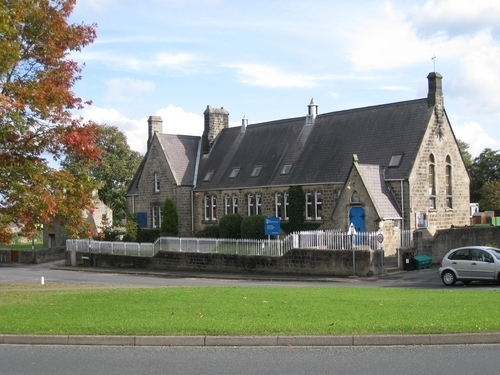-
Kids Can Do It
a crafting in cardboard and stripwood practical actvity day.
'standard' materials provided or bring your own.
pre-printed designs and patterns available to prepare at home first.
adults and teens welcome if accompanied by Under Year 7's they're helping
cafe open for teas, coffee and biscuits
-
From a website comment by Mr Derek Barker:""My father Jim Walker formerly a gas meter reader was born in a cottage adjacent to the church gates. Unfortunately I do not know which one of the pair he was born in. As a child he used the chair shown in the photographs. My father who passed away in 2004 told me that it was made from oak taken from Hampsthwaite Church. I make no claims as to its provenance but there is just a chance that it was made by Peter. The Teddy which gives scale to the chair is over 100 years old and belonged to my father in law Arthur Myers of Stubhouse Farm (Emmerdale site) in Harewood Park."
-
THIS COMING WEEKEND 21st and 22nd JUNE!I am delighted to announce that 38 young soldiers from22 Platoon at the Army Foundation College will be hosted here todo 'good works' around the village towards their Duke of Edinburgh Award.Please welcome them, thank them, and if you wish, join them!They will be working 1030hrs - 1530hrs around Feast Field on Saturday,followed by Memorial Hall then Village Centreand ending at the churchyard on Sunday.Our Community PayBack Team have kindly loaned several gardening tools,we have sourced others, but if you are able to loan any, especially clippers,trimmers, shears, forks or half moons etc. that would be very helpful.Please label them bring along to leave in the Memorial Hall Foyer
-
Local planning authorities need to regularly identify and update their supply of sites for housing development as part of their adopted local plan. North Yorkshire Council is currently drawing up a new county wide local plan and a new consultation (Issues and Options) is about to begin.
-
Our Memorial Hall was built to honour the fallen in two world wars and give thanks to those who returned. It is appropriate therefore that we play our full part in the national celebrations and village activities are planned for May 8th VE-Day and Saturday May 10th 2025
-
Remembering Hampsthwaite’s Blind Joiner - an article by Shaun WilsonLike the market town of Knaresborough, who had ‘Blind Jack’ – John Metcalf, the road builder of Yorkshire in the eighteenth century, the small rural village of Hampsthwaite had it’s blind hero also, almost a century later – Peter Barker who became known as ‘The Blind Joiner of Hampsthwaite.’ Though there are some similarities between John Metcalf and Peter Barker’s lives, these are purely co-incidental and each fulfilled a life, character and career in their own right.
-
Arsenic Poisoning in Hampsthwaite - The Execution of Hannah Whitley
In 1789, Hannah Whitley of Hampsthwaite used a pie as the delivery medium for a fatal dose of arsenic, with the poison concentrated in the crust. She claimed She had been coerced into the act of poisoning by her employer, a local linen weaver named Horseman, who was involved in an on-going feud with the intended victim.
-
JANE RIDSDALEAged 33 years, born at Hampsthwaite, near Harrogate, Yorkshire, her height is 31 ½ inches.She is remarkably chearfull & enjoys very good health.Published July 1st 1807 by Jane Ridstale, at Harrogate where purchasers of this Print will have the opportunity of seeing and conversing with her
-
Joshua Tetley was the founder of Tetley’s Brewery in Leeds, and he retired with his wife Hannah to Hollins Hall on the outskirts of Hampsthwaite (Hollins Hall Retirement Village).
-
SCRUBBERS & STONES - Sat 29th June 10.30am - 2.30pm - Entry FREE!
Explore the Memorials at St Thomas a'Becket
Memorials Treasure Trail - for children if all ages
Self-Service / Self-Checkout BBQ from 12 noon (inc. veg option) Food £2, Drink £1, Donations? - yes please!
Hot & Cold Drinks
Laptop & Screen to show Mapping Hampsthwaite’s Past
Use a Bucket & Brush to help reveal Inscriptions on the older memorials
. . . or just Sit & Enjoy CORPUS CHRISTI BRASS BAND . . . from 11.30am
. . . followed by Afternoon Tea & Cakes at the Memorial Hall!
© DT Online 2010 - 2025
| The 'Spanish Flu' - Hampsthwaite 1918
Milly Hebblethwaite was a delightful and diligent 14 year old pupil at Hampsthwaite school, who came from a growing family who lived in the Hollins. The previous year the school had given her a prize for her excellent attendance. She died of influenza on 10th November, 1918; This was one day before the end of the ‘War to end wars,’ the first World war.
[article by Angela Sansam - June 2020] 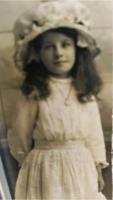 Milly Hebblethwaite
The war which was finally coming to an end had brought many changes and great sorrow to many families in the dale with the loss of their sons in the slaughter. Others returned, like Arthur Iveson, maimed for the rest of his shortened life, his lungs shattered by mustard gas poisoning, his mind as wounded as his body.
Some injured men, discharged from the army via military hospitals in France or England, brought with them the deadly influenza which was already raging there. Others might have brought it home while on leave. Other than nursing there were no effective treatments for this strange new illness.
We don’t know how many people died in Hampsthwaite but there seems to be a definite spike in the number of burials of teenagers and young adults recorded in the church records. Between June 1918 and May 1919 possible young victims of the ‘flu, as well as Milly, include Edith Cuthbert (aged 15), Jane Barker (21), Nora Ibbetson (20), Mary Houseman (33), Lucy Paul (21) and Ernest Gurney (16).
Over the war years life went on much as usual in the school under the strict regime of ‘Talley’ Thompson, his wife, a student teacher and Mrs Carr, the kindly Infant teacher. Regular inspections took place and remarked on the children’s good knowledge of the Prayer Book and Catechism. Visitors came and gave lectures on such subjects as Temperance. Children were absent with the usual measles, mumps, whooping cough and even typhoid outbreaks. Some of these resulted in the school being shut for a while. From time to time several were sent home with nits. Boys were allowed to go ‘tatey picking’ because of the shortage of adult labour to do the job. Others no doubt missed school to help on farms at busy times. A day’s holiday was given to celebrate the bravery of the West Yorkshire regiment and another to celebrate West Riding schools collecting a quarter of a million pounds in War Loans, to support the costs of the war. 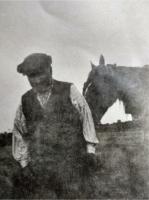 Jack Iveson
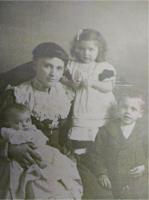 The Waltons
In late September 1918 the school had been closed for two days for Pateley Feast, a social highlight of the dale and probably the sort of event that triggered talks about the need for Temperance. Many would have travelled there in overcrowded railway carriages or milled around in the holiday crowds, both excellent breeding grounds for the influenza virus. By 23rd October only 69 pupils out of the 82 on the school books were in school. Five days later only 64 children were present.
‘All the absent children, except one, are reported ill’ wrote Mr Thompson in the School Log. On 28th October Dr Forbes, the local Medical Officer of Health, ordered the school to be closed and it remained closed for over a month, ’till 2nd December, when only 60 children were present.
In mid February 1919 there was another outbreak with over 20 children away. Dr Forbes and a school nurse visited on 5th March and sent home two Garside children as they appeared to be ‘threatening colds (influenza)’ Clara and James recovered. On 14th March the school was closed again for a fortnight and the ‘floors etc’ washed.
Hampsthwaite in 1918 was a very different place to how it is now. Many had been born there and most worked locally. There was a cluster of single story cottages that stood where Peckfield Close is now and ‘Teapot Row’, built for railway workers, other houses down near the church. The rest lived in scattered houses and farms.
The Ivesons were one such family who lived up on Skipton Road. Old Jack Iveson and his sons farmed, had a dairy round and carted stone to supply the builders in Harrogate. His daughter’s family, the numerous Waltons, lived in the Hollins close to the Hebblethwaites. Alice and Nell Walton would have walked to school with Milly and played together.
At the same time Milly fell ill so did 11 year old Nell, the apple of her grandfather’s eye. To avoid the rest of the children getting ill and to help his daughter, Jack walked down West Lane and slowly helped Nell struggle back up the hill despite being ‘full of fever’. Up at the farm he carefully nursed her back to health. To the end of her 98 year long life Nell would talk about the hard slog up the hill. And she never forgot ‘my little playmate, Milly Hebblethwaite.’
The 'Spanish Flu' - Hampsthwaite 1918 Milly Hebblethwaite was a delightful and diligent 14 year old pupil at Hampsthwaite school, who came from a growing family who lived in the Hollins. The previous year the school had given her a prize for her excellent attendance. She died of influenza on 10th November, 1918; This was one day before the end of the ‘War to end wars,’ the first World war.
[article by Angela Sansam - June 2020]
|







